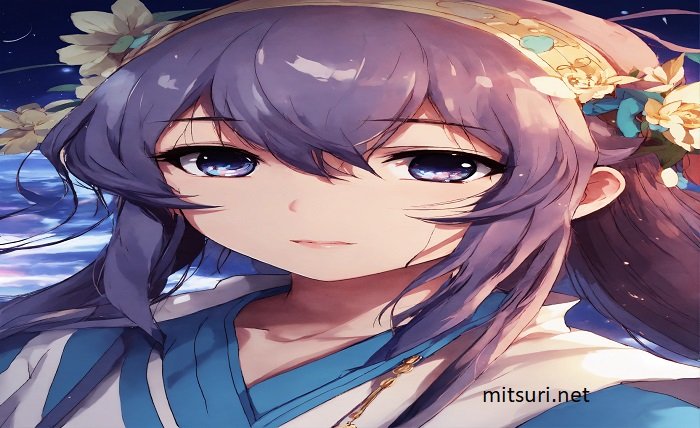Introduction
Among the most formidable and multifaceted characters in “Demon Slayer: Kimetsu no Yaiba,” Kokushibo stands out in the series’ universe. female kokushibo, a formidable foe that confronts Tanjiro Kamado and his companions, is well-known for his tremendous strength and terrible past. But there’s also a fascinating alternative concept that has people excited: a “Female Kokushibo.” This retelling takes the well-known male demon and investigates how a female version of him might be viewed and used. We will delve into this idea in-depth in this blog post, dissecting how a female Kokushibo would function in the “Demon Slayer” universe and what modifications and adjustments would be necessary.
Understanding Kokushibo: The Male Demon
The character female kokushibo, formerly known as Michikatsu Tsukiguni, is significant in “Demon Slayer: Kimetsu no Yaiba” because of his tragic past and strong physical prowess. Michikatsu is an important character since he is the oldest brother of Yoriichi Tsukiguni, one of the strongest demon slayers. He goes from being a well-liked Hashira to being a formidable demon under Muzan Kibutsuji. He was identified as one of the Upper Moon demons, namely Upper Moon One, after transforming into Kokushibo. He was well-known for his exceptional fighting skills and command of Moon Breathing tactics. Kokushibo is a key character in the series’ examination of topics like power, envy, and repentance because of his rich past, which includes his rivalry and jealously with his brother Yoriichi.
The Traits of Kokushibo
A variety of remarkable qualities characterize female kokushibo and make him stand out as one of the most powerful adversaries in “Demon Slayer.” His superior fighting prowess and enormous physical strength are a reflection of his status as Upper Moon One. He has extensive knowledge of demon-slaying methods and plans because he was a former Hashira, and he uses this information to enhance his demonic abilities. Kokushibo stands out from other demons due to his usage of Moon Breathing techniques, a special and potent variation. His tragic past, which includes a fall from grace and a tense relationship with his brother Yoriichi, gives his character more emotional nuance and complexity, making him a tragic figure as well as a formidable opponent.
Conceptualizing a Female Kokushibo
Reinterpreting female kokushibo as a woman entails keeping his essential qualities while adopting a fresh perspective. To be true to her heritage, a female Kokushibo can keep her Tsukiguni surname, but change her first name to something more feminine, such Michiko or something like. Her look would probably be changed to incorporate more stereotypically feminine features while keeping the defining characteristics of Kokushibo’s original design, such his long hair and unusual clothing. Although a female Kokushibo would explore other emotional responses and relational dynamics, her personality would nonetheless embody the essence of his strength and pride and offer a new insight into the character’s interactions and motives.
Impact on the Demon Slayer Universe
The plot and dynamics of “Demon Slayer” would be significantly altered by the inclusion of a female Kokushibo. Her relationship with Muzan Kibutsuji might develop in a different way as a result of gender dynamics, which might add new levels of complexity to their exchanges. The dynamics inside the demon hierarchy would also change in the presence of a female Upper Moon One, influencing how other demons view and relate to her. Furthermore, examining the story’s themes of family, rivalry, and power from a fresh perspective may shed light on the characters’ problems and motives. The series’ main conflicts may be explored in greater detail and subtlety as a result of this redesign.
Visual and Design Adjustments
A female kokushibo‘s appearance and design changes would incorporate conventionally feminine elements while preserving the character’s menacing and frightening presence. Her armor or kimono could be altered to reflect her status as an Upper Moon demon, or it could incorporate other aspects of traditional feminine dress. Her hair could be worn in a way that highlights femininity, perhaps with the addition of ornaments or striking color changes, all the while maintaining the long, flowing style that is typical of Kokushibo. It would be necessary to strike a balance between femininity and the demonic qualities that characterize Kokushibo’s design in order to maintain the impact and recognition of her work.
Challenges in Reimagining
Reimagining female kokushibo as a girl comes with a number of issues that need to be resolved in order to preserve the integrity of the character. Making sure Kokushibo’s essential traits—such as his fortitude, pride, and tragic past—stay the same while transforming him into a feminine character is a significant task. Another issue in balancing gender relations is managing established gender stereotypes and expectations while maintaining the spirit of the character. In order to ensure that the reimagining strikes a chord with the audience, it is also important to carefully analyze how devoted fans may respond to changes in a cherished character when addressing their reaction to the modifications.
Conclusion
The idea of a female kokushibo creates intriguing opportunities for examining character growth, gender dynamics, and narrative complexity in the context of the “Demon Slayer” universe. Fans and creators alike can interact with the character in fresh and captivating ways by reinventing this formidable demon. Enriching the conversation about gender and power in anime, the concept of a female Kokushibo can be expressed through fan art, theoretical talks, or imaginative narrative.
FAQ
What would a female Kokushibo’s name be?
A female kokushibo might keep her last name Tsukiguni, but she might go by Michiko or another female-friendly first name instead.
How would a female Kokushibo differ from the original male character?
She might have various connections and emotional reactions, in addition to having different physical characteristics like a more stereotypically feminine appearance.


